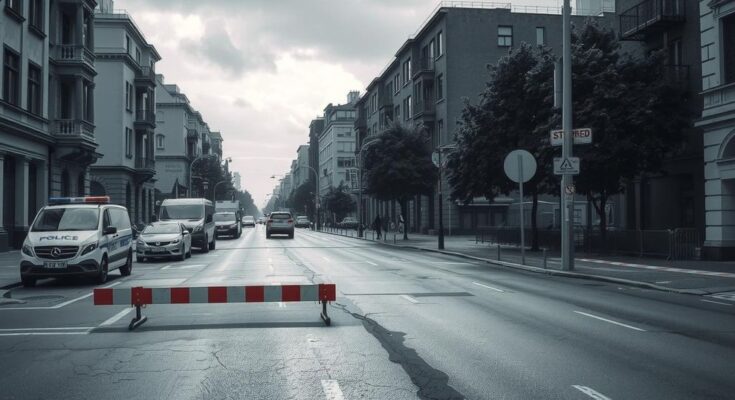Peru is facing an escalating security crisis as President Dina Boluarte’s emergency measures have not reduced violence. The state’s response has been criticized for being reactionary, amid high crime rates and corruption allegations against Interior Minister Juan José Santiváñez. With public dissatisfaction growing, Boluarte’s credibility is further eroded, casting doubt on her governance amidst calls for a better strategy to combat crime.
Peru’s ongoing security crisis has escalated, despite repeated emergency measures imposed by President Dina Boluarte. The government’s response has been met with skepticism, as elevated crime rates coincide with allegations of high-level corruption, undermining confidence in effective governance. President Boluarte’s declarations, aimed at addressing the violence, have failed to yield tangible results, with an alarming rise in homicides persisting across the nation.
In an effort to combat violence, Boluarte declared a state of emergency in Lima and Callao on March 17, following the high-profile murder of cumbia singer Paul Flores, also known as “El Russo”. This month-long measure, which commenced on March 18, empowers police to maintain public order, supported by military forces, while suspending constitutional rights such as movement and assembly. Unfortunately, the situation has deteriorated further, questioning the efficacy of these security strategies.
Since the emergency declaration, three additional murders have occurred, casting serious doubts on the government’s approach. This latest action marks the second emergency measure in six months, following a previous declaration in September prompted by transport worker concerns regarding extortion. Critics label this approach as reactionary, lacking a comprehensive strategy to counter organized crime effectively.
Interior Minister Juan José Santiváñez, a key figure in the current security crisis, faces potential censure motions in Congress, with discussions expected March 26-29. With significant political opposition, he risks becoming the seventh Interior Minister dismissed under Boluarte’s authority, amid widespread public discontent and a disapproval rating of 79%. Despite the overwhelming backlash, Boluarte’s steadfast support for him raises questions about their partnership.
The urgency of the situation was underscored by the brutal murder of Paul Flores, who was targeted when gunmen attacked his tour bus post-concert. Authorities previously ignored extortion threats against his band, prompting heightened public outcry. In a controversial remark, Boluarte suggested she was “seriously considering the death penalty” for criminals, despite legal barriers, revealing a lack of a coherent security strategy.
The Human Rights Ombudsman criticized the government’s emergency approach, stating, “previous states of emergency have not significantly reduced crime in the capital and other regions of the country.” This statement underscores the need for evidence-based policies rather than politically motivated actions. Alarmingly, homicide statistics reveal over 2,000 killings in 2024 alone, with cities like Lima, Trujillo, and Arequipa wrestling with organized crime.
While corruption claims engulf Santiváñez, including alleged solicitation of bribes, public faith in the government deteriorates. Despite evidence such as WhatsApp messages and bank transfers implicating him, Boluarte has chosen to protect her minister against these claims, dismissing them as political attacks. Bloomberg cites Boluarte as “one of the world’s most unpopular leaders,” particularly after her conspicuous absence at the World Economic Forum amid the crisis.
The administration’s response has taken an authoritarian turn; the emergency measures facilitate unwarranted entries by security forces and restrict public demonstrations, arousing concerns about potential abuse. Reports indicate a lack of military and police presence in critical areas of Lima during the emergency’s initial hours, contrasting government assurances of enhanced security.
The security crisis in Peru is reflective of broader issues in the region, with rampant organized crime evident in Ecuador and Colombia. However, the Peruvian government’s inability to implement effective, proactive measures bespeaks a concerning trend of corruption coupled with ineffective governance. As the nation braces for possible congressional action regarding Santiváñez’s fate, the greater question remains: Can Peru extricate itself from this paradigm of violence and inefficacy under Boluarte’s leadership?
In summary, Peru’s security crisis deepens as emergency measures fail to curb escalating violence and corruption allegations compromise governmental integrity. The lack of effective governance and the reactionary nature of the administration’s approach raise critical concerns regarding its ability to address the pervasive issues of organized crime. With a disillusioned public and an ineffective Interior Minister, prospects for a resolution under President Boluarte appear increasingly dim.
Original Source: www.intellinews.com




